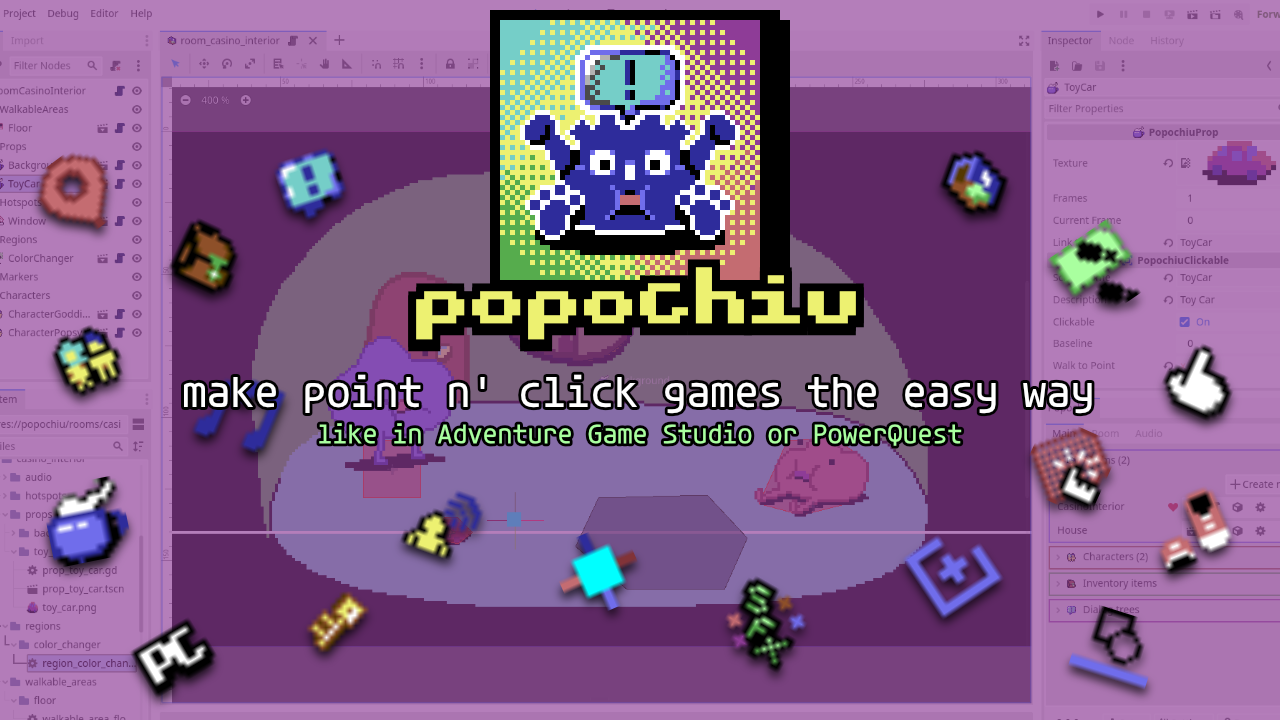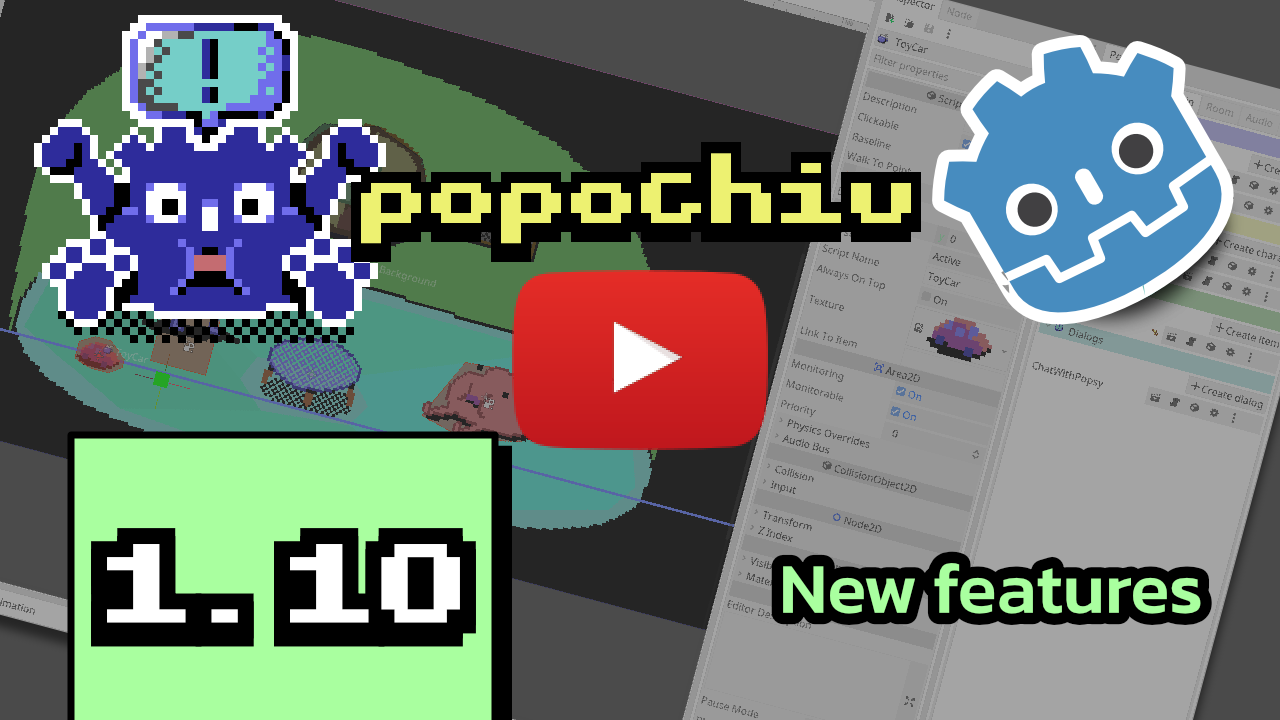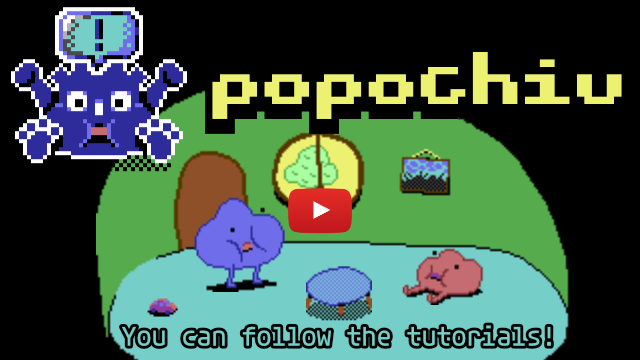🌎 Lee la versión en Español 🌎
A Godot plugin to create point n' click games with a workflow similar to Adventure Game Studio and PowerQuest.
🔍 Read the Documentation to know what you can do with the plugin.
❤️ Join Carenalga's Discord to know about daily updates and releases.
About
This tool consists of two parts: the core (Popochiu) and the dock that helps with the creation of the Nodes that make use of that core. It is inspired in how graphic adventure games are created in Adventure Game Studio and Power Hoof's Unity plugin: PowerQuest. This is, using Rooms as the scenes where Characters can move and interact with Props and Hotspots, and providing an Inventory system and Dialog trees.
Using Godot 4? Try the latest alpha of Popochiu version 2
We're working on making Popochiu version 2 even better, but it takes time. You can follow our progress in branch 2.0 and the branches that start from it. Our latest release is Alpha 5.
Installation
Popochiu works on Godot 3.3.x to 3.5.x. And now in Godot 4 too!!!
- Godot 4 users can download Popochiu 2.0 Alpha 5. If you are using Godot 3.5 onwards, download Popochiu 1.10. If you are using Godot 3.3 to Godot 3.4.5, download Popochiu 1.8.7.
- Extract it and copy the
addonsfolder into your project folder. - Open your Godot project and enable the Popochiu plugin:
Project > Project Settings... > Plugins(the tab on the top). - Restart Godot
Project > Reload Current Project. - You'll see the Popochiu dock at the right. That's all!
What's new in the latest version
Tutorials
You can follow the tutorials (English subs. (English version will be uploaded soon!)) in this list to learn:
- How to setup your project.
- How to create rooms where the player can walk around, and how to setup them if the exceed the limits of the game window.
- How to create characters and play their voices when they talk.
- How to create Props and Hotspots to interact with the environment.
- How to create Inventory items and how to add interactions between them and the Props, Hotspots and Characters of your game.
- How to create branching dialogs.
- How to add sound effects, music, voices, and graphic interface sounds.
More tutorials will come in the following weeks to learn:
- How to save/load the game state.
- How to work with Props that have more than one frame in their spritesheet.
- How to add animations to your Characters.
- How to use emotions when characters speak.
- And much more...
Credits
Made by Carenalga.
Now with the collaboration of @stickgrinder , @mgdesign and @drbbgh , members from Illiterate Code Games.



